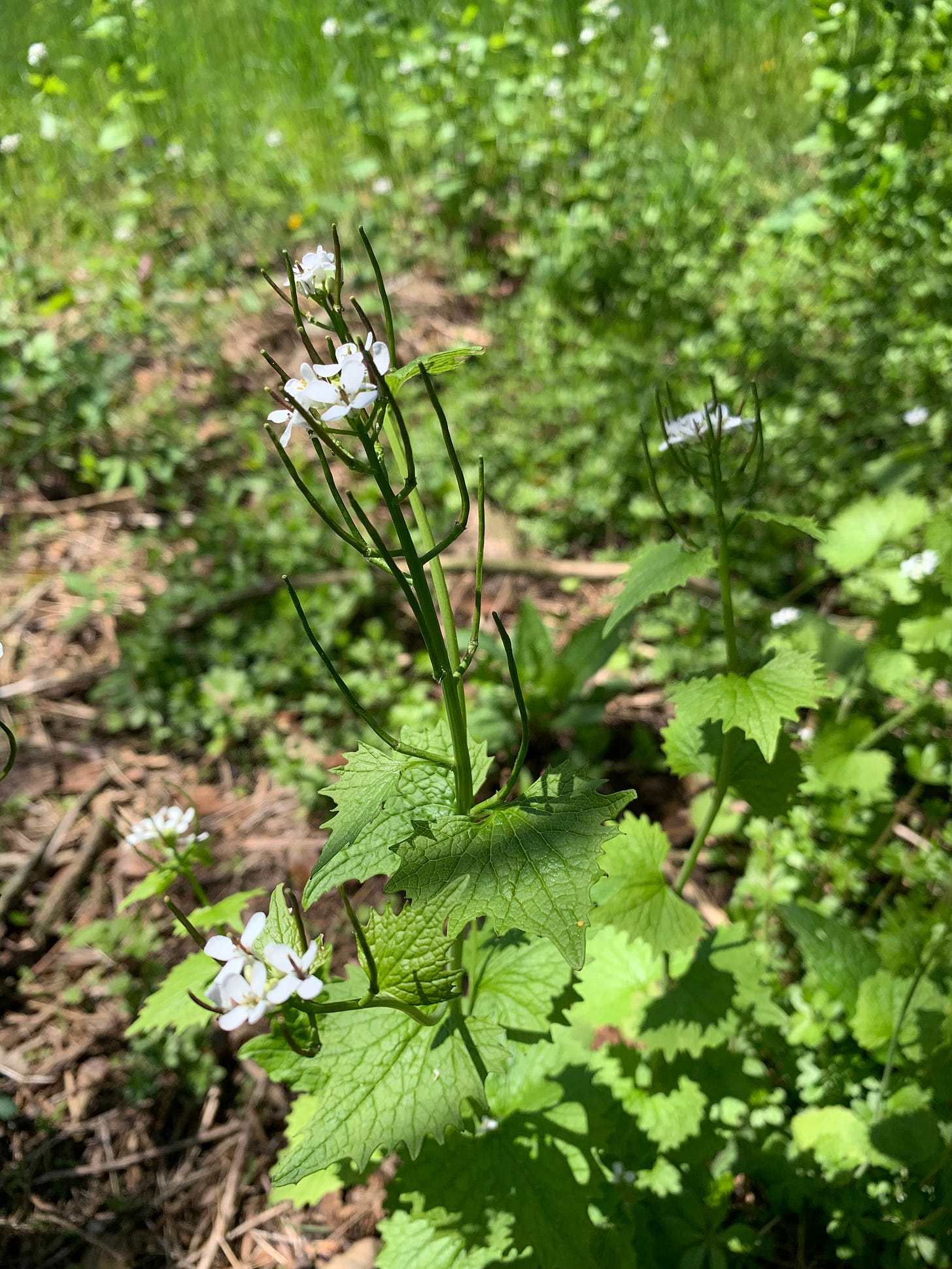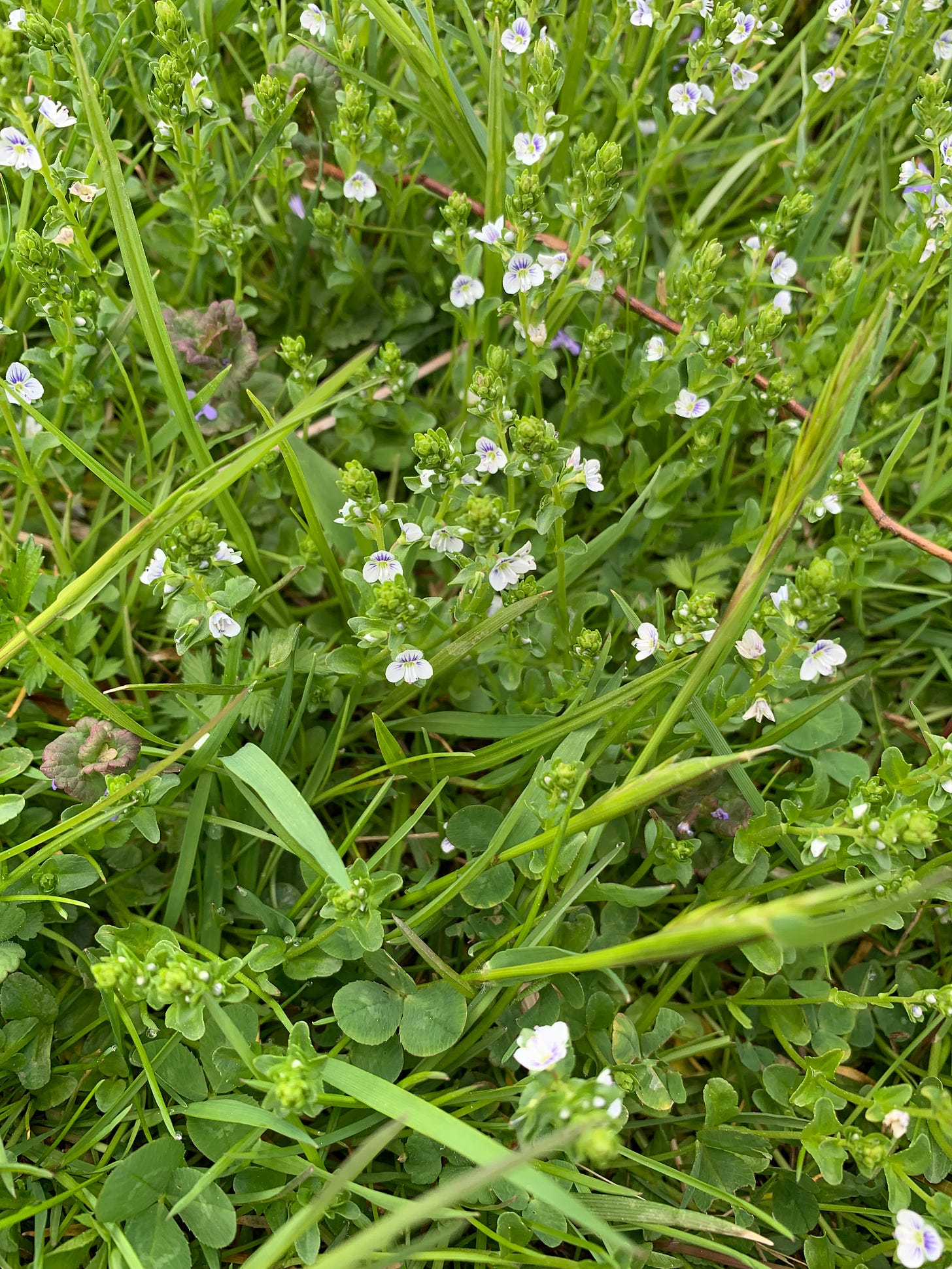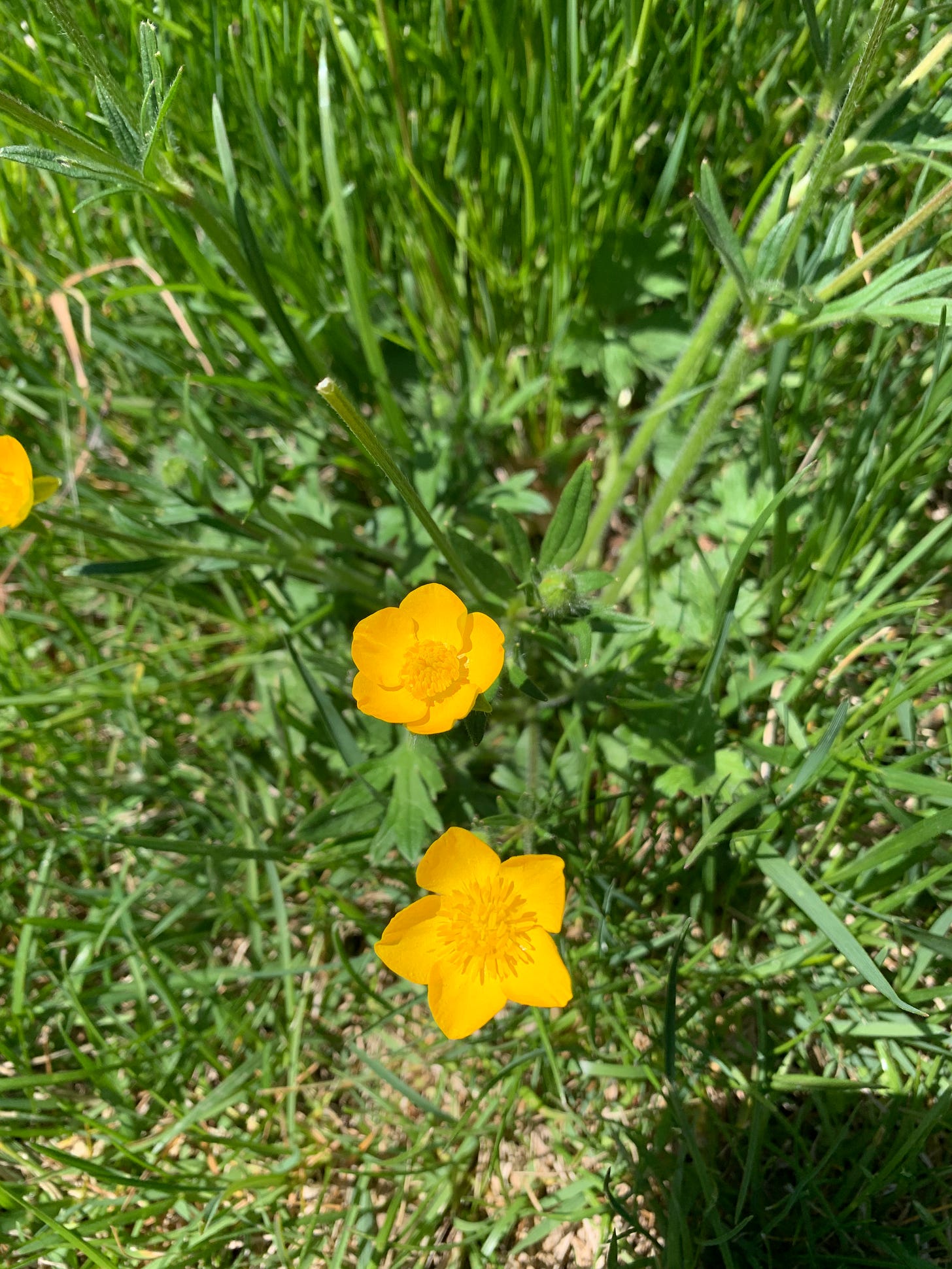At Puddock Hill, one unwelcome sign of early spring is the sight of garlic mustard popping up like mushrooms.
I tend to find this plant in areas of recent disturbance or in partial shade. One day it’s not there at all, it seems. The next day it’s in flower. And the day after that, if I’m attentive enough to notice, it’s getting pulled up like crazy.
Garlic mustard (Alliaria petiolata) is a biennial herb in the mustard family and one of North America’s older invasives. Believed to have been introduced to our continent in the 1860s for herbal and medicinal purposes, this Eurasian species has spread so prolifically that it now appears in five Canadian provinces and more than half of all American states, including Alaska. But it behaves most virulently in the Northeast and Midwest. It flourishes in all New England states, west to Wisconsin, Iowa and Missouri, and as far south as Georgia. At Puddock Hill in the Brandywine Valley, we have never experienced a spring season without it.
Aesthetically, of course, the plant is inoffensive, and some might even find attractiveness in its upright habit and small white flowers. In any case, it doesn’t linger here much longer than late spring.
Many invasive species can be attractive or seemingly harmless at first blush, but backyard stewards won’t allow themselves to be fooled.
Here’s one garlic mustard plant among many growing in the black walnut woods. Prepare to meet the grim reaper!
Some non-native species become so familiar that we forget their origins. I recently had an exchange on Twitter with a person from Kansas who shared pictures from a walk in the woods there and tagged garlic mustard as a wildflower. When I pointed out its status as an invasive, she half agreed but noted that it is listed as naturalized in a Kansas wildflower guide. (Check out the comments on the linked web page.) Well, in a sense we’re both correct, because a wildflower is simply something that grows without human intervention, which garlic mustard does now, but the only reason it’s here in the first place is human intervention!
We don’t consider all non-native plants invasive just because they’ve naturalized, however. Invasive plants are those foreigners that have become so noxious they negatively affect native flora and fauna.
In the case of garlic mustard, harmful impacts include outcompeting less vigorous woodland natives such as trillium and toothwort. Since certain varieties of the latter serve as host to several species of butterfly, the success of garlic mustard at the expense of toothwort becomes a threat to these butterfly species as well. Imagine if your most essential sustenance were no longer available, and you begin to grasp the impact of a simple consequence like the crowding out of toothwort.
But it’s worse than that. The West Virginia White Butterfly (Pieris virginiensis) inadvertently lays its eggs on this invader, which might not be so bad except that the butterfly’s larvae find the plant toxic and wither away before they reach maturity. So now imagine someone poisoning your kids’ favorite food. No caterpillars, no butterflies.
Significant stands of garlic mustard can have even more insidious consequences than tempting butterflies on false pretenses. They also alter the ecosystem around them by interfering with the health of microbial and fungal communities in soil. The disruption this causes to natural soil balance further suppresses native growth in favor of the invader, creating a vicious cycle that in part helps explain garlic mustard’s long streak of success.
Our combat strategy at Puddock Hill is to use garlic mustard’s salient qualities against it. As an herbaceous biennial, no given plant has much staying power, so keeping after it does yield rewards. The plants are usually shallow-rooted and therefore easily pulled up by hand. Larger swaths can be string trimmed, and the remains rarely have enough energy to make a comeback, in my experience. Hitting them a second time a few days later, if need be, usually sets them back for good. And over time, of course, allowing fewer plants to flower and go to seed reduces the seed bank in future years.
Sadly, however, with viable seeds persisting up to a decade in the soil, one must take the long view. Like many invasives, garlic mustard will probably always be with us. But if we limit its impact, we will all be better off.
If you look closely among the grass this time of year, you may see the tiny flowers of speedwells (Veronica sp.). These were on the barn path this week:
The buttercups (Ranunculus sp.) are hard to miss. This one’s just south of the barn:
Among early shrubs, the witch alder (Fothergilla gardenii) we planted last fall is really showing off, in defiance of cool temperatures:







Joel, I remember at our first house in 1990 looking for a flowering tree for the front yard. We went to the garden store and they recommended the “perfect” tree, a Bradford Pear….now when I drive along the highways and byways every spring, I’m amazed at the invasion of Bradford Pears…..